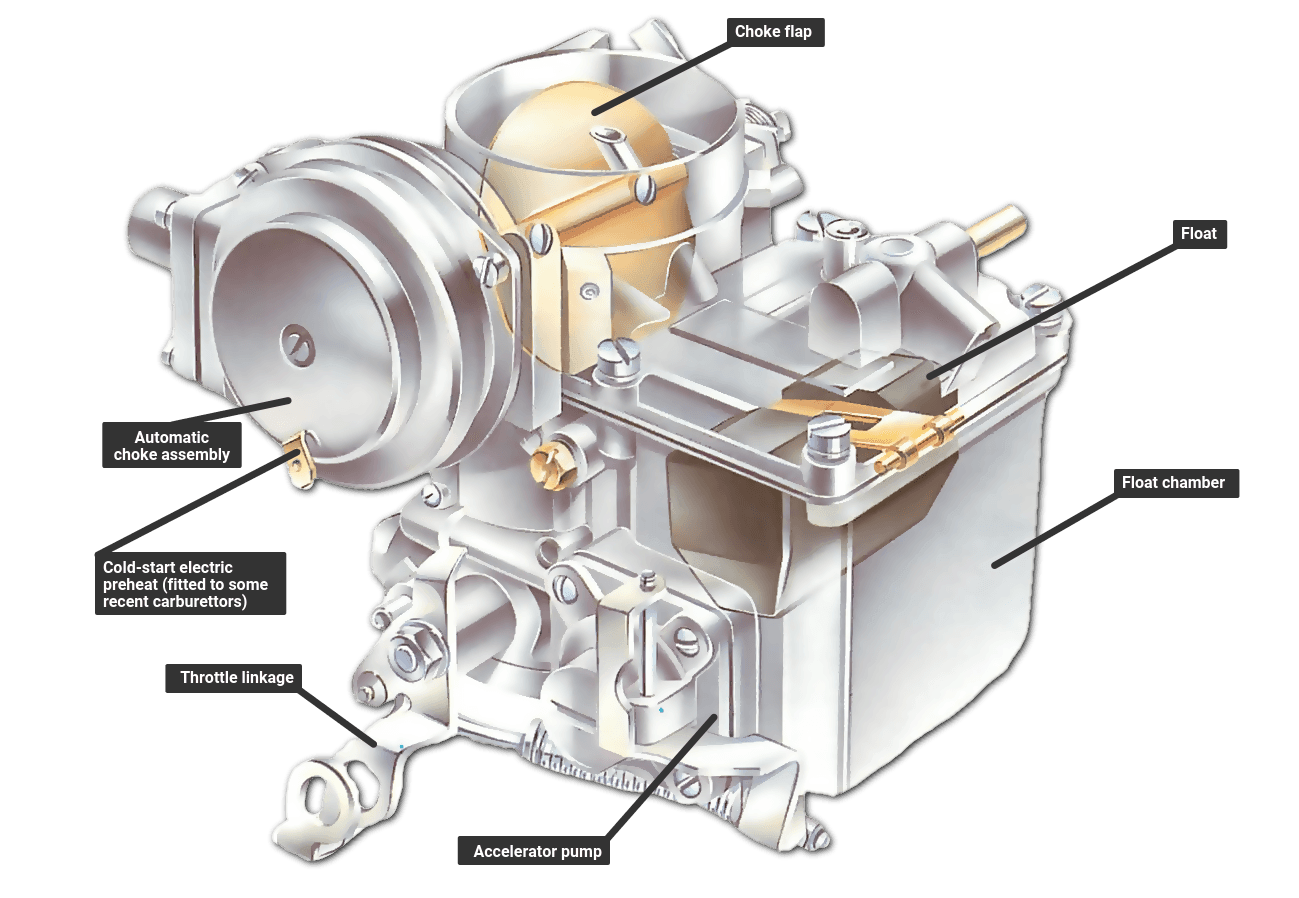How the fuel system works - fixed-jet carburettors
The Video Course teaches you everything about modern cars.

The fixed-jet carburettor resembles the simpler variable-jet type (See How variable-jet carburettors work ) in having a venturi - a constricted neck - through which air flows on its way to the engine .
The partial vacuum caused by increased air speed through the venturi sucks fuel through a jet to mix with the air.
Similarly, air flow is controlled by a throttle flap linked to the accelerator pedal, to regulate engine speed.
Above the throttle a choke flap partially blocks the air flow, to give a richer mixture for starting. As in all carburettors , a float chamber provides a steady supply of fuel.
Changing from jet to jet
The fixed-jet carburettor has open jets to regulate fuel flow through them. Consequently there must be several jets of different sizes to provide the different amounts of fuel needed at any moment.
When the engine is idling, very little fuel is required. There is not much air flow through the almost closed throttle - too little to draw any fuel through the main jet in the venturi.
But there is a high vacuum underneath the throttle flap, where there is a tiny slow-running jet that forms part of the often complex slow-running (idling) circuit . The vacuum pulls a trickle of fuel through this jet to keep the engine idling.
When the throttle is opened, the air flow suddenly speeds up. An accelerator pump linked to the throttle provides a brief squirt of extra fuel to enrich the mixture temporarily to prevent a flat spot - a momentary hesitation - which is the inability of the carburettor to provide the correct mixture to meet the sudden power demand.
The pressure to supply this squirt comes from a rubber diaphragm open to the air on one side. Normal air pressure, higher than the partial vacuum inside the carburettor, pushes the diaphragm inwards against a piston , which pumps fuel.
Afterwards, the fast air flow sets up a vacuum in the venturi which draws fuel from the main jet. The faster the flow, the more fuel is sucked out. Most carburettors have one or more non-return valves , usually a small ball seating on a conical hole. This prevents wasted flow-back of fuel.
Fine adjustment
By itself the main jet is not accurate enough to supply exactly the right amount of fuel over the full range of engine speeds. It tends to provide too much at high speeds.
There are several devices for avoiding an over-rich mixture. Depending on type, a fixed-jet carburettor may have one or more of them.
In the compensation system, the fuel supply from the float chamber is split in two. One branch leads straight to the main jet. On the other branch, air leaks into the fuel through a small jet. The faster the fuel flow, the more air leaks in and the weaker the final mixture.
In the air-correction system all the fuel goes through the main jet, but instead of going directly into the venturi it first passes through a vertical well containing a perforated emulsion tube.
At the top of the emulsion tube is a small jet, open to the air. It allows air to bubble into the fuel through the holes in the tube.
When the car is cruising, engine speed is high but the throttle is not wide open. Some carburettors have an economy device with a rubber diaphragm connected on one side to the venturi and open to the air on the other.
The increased vacuum under the throttle in these conditions makes the diaphragm bulge inwards, opening a valve to blend extra air into the fuel and weaken the mixture slightly.
Fuel injection
The Ultimate Car Mechanics video course
Learn everything about modern cars from our new video series.
Learn more >-
We build a Mazda MX5 Miata from scratch
We start by tearing down and then rebuilding the whole car.
-
Every part explained
There's ridiculous detail on every part. Clearly and easily explained.
-
All modeled in 3D
We've created the most detailed 3D model ever produced so we can show you everything working.






